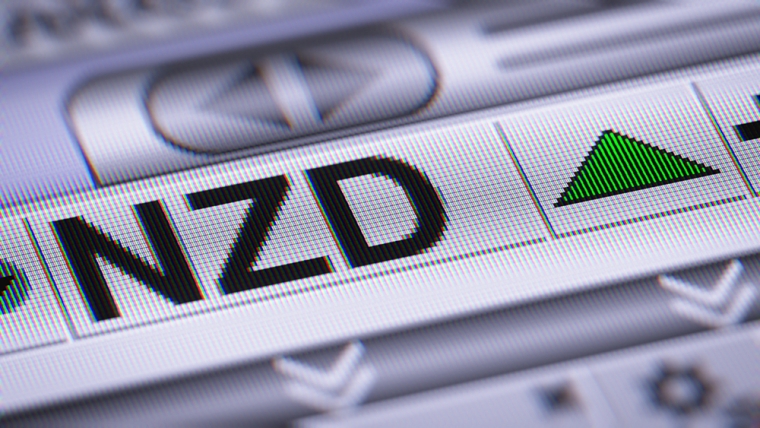
By Stuart Talman, XE currency strategist

A bumper week has commenced on a risk positive footing, US equity markets adding to their gains whilst bond yields firm near the top of recent swing highs, boosting the US dollar through the New York afternoon. It's been a relatively subdued 24 hours given the lack of market moving headlines as market participants slip into wait-and-see mode ahead of pivotal events over the coming 72 hours.
Opening the new week near 0.6130, the New Zealand dollar's net move through Monday has been minimal, trading an intraday high through 0.6150, before reversing course through the first half of US trade, easing back into the low 0.6100's.
News that private banks in China have followed their state-owned peers in cutting deposit rates boosted the China sensitive New Zealand and Australian dollars through the Asian afternoon ahead of an expected stimulus announcement later in the week.
Analysts have concluded the PBoC will cut the One-Year Medium Term Lending Facility Rate (MLF) by 10 to 15bps, scheduled to be set this Thursday. The MLF, currently set at 2.75%, is the rate at which the PBoC lends to large commercial banks and acts as a guide for the main lending benchmark, the Loan Prime Rate (LPR).
The PBoC introduced the LPR in mid-2019, replacing the previous one-year lending rate benchmark. The LPR, China's equivalent to the OCR, is the main policy rate that derives loans for households and businesses.
One-year LPR is currently set at 3.65%, the five-year at 4.3%. The LPR is expected to be lowered next Tuesday, the 20th.
In a vacuum, PBoC monetary easing should support the Kiwi and Aussie dollars as authorities attempt to boost economy activity that has failed to return to pre-pandemic levels. Easier lending conditions in turn will boost soft household spending, an ailing property market and faltering industrial production, generating more demand for the antipodean's exported commodities.
There are, however, more dominant factors that will determine short to medium term direction for the NZD and AUD, namely inflation data, The Fed and more broadly, global risk sentiment.

US CPI for May is released 30 minutes past midnight, expected to report further easing in both headline and core inflation. Having peaked at 9.1% in June last year, the headline number is projected to print a month-on-month gain of 0.2%, yielding an annualised rate of 4.1%. The core rate is projected at 0.4% MoM, 5.2% YoY having peaked at 6.6% in September.
Simple maths and base effects dictate that as the large monthly results that printed ~12 months back (monthly headline CPI maxed out at 1.2% in JUN. '22) drop out of the annualised calculation, the headline and core rates of inflation encouragingly recede towards the Fed's 2% target.
However, core inflation north of 5% remains uncomfortably high particularly given the past five months have all printed 10bps either side of a YoY rate of 5.6%.
Should we receive a core MoM reading of 0.5% or 0.6%, maintaining annual core inflation near 5.5%, expect a sizeable sell-off in US equities and other risk-sensitive assets as market pricing spikes higher, lifting the implied probability of a hike at Thursday morning's FOMC meeting.
Current market pricing assigns a less than 1-in-4 chance the Fed hikes by 25bps to 5.25%-5.50%.
The other major macroeconomic event over the next 24 hours is UK employment data.
Following last month's shock UK CPI number, reporting a significant upside surprise, the market hawkishly repriced the BoE cycle, adding an additional 100bps of hikes to price the terminal rate in the region of 5.25%-5.50%.
Market pricing will prove too aggressive should the mix of headline jobs growth, employment claims, wages and the unemployment rate indicate labour market softness.
Year-to-date, the pound is the strongest performer amongst the G10, GBPUSD gaining over 4%.
The Kiwi is down close to 7% against the pound.
NZDGBP looks to be forming a basing pattern through the first half of June, marking a three year low a few pips above 0.4830 on the 1st of the month before rebounding off 0.4850 support last week.
Our near-term resistance zone is located between 0.4900/15 which includes the 38.2% Fibonacci retracement of the 23 May to 01 June downswing. Price action improving through here adds further weight to the basing case.
Turning to NZDUSD, the next 24 hours direction is contingent on the market's reaction to the CPI data. It's been six months since the core inflation reading surprised to the downside…..we therefore favour an in-line or hot print.
Should a hot number be received, NZDUSD plunges below 61 US cents, likely taking out the 31 May low below 60 US cents should the FOMC meeting deliver a hike.
A downside CPI miss - it's off to the races…..NZDUSD to break above the 200-day moving average to extend higher through 62 US cents.
Daily exchange rates
Select chart tabs
Stuart Talman is Director of Sales at XE. You can contact him here.

We welcome your comments below. If you are not already registered, please register to comment.
Remember we welcome robust, respectful and insightful debate. We don't welcome abusive or defamatory comments and will de-register those repeatedly making such comments. Our current comment policy is here.